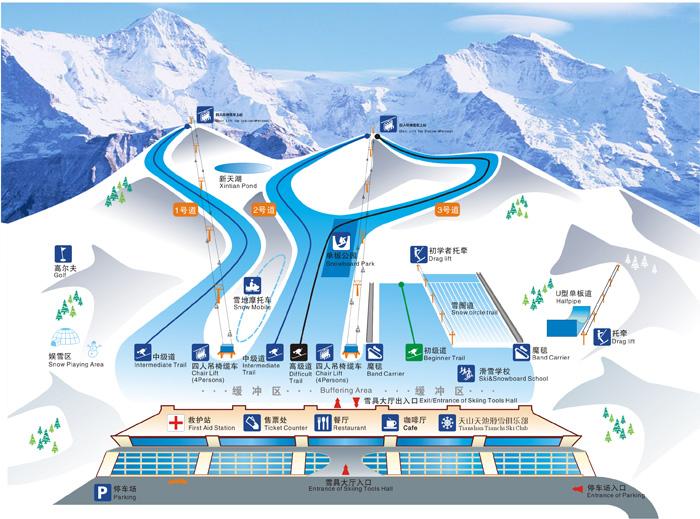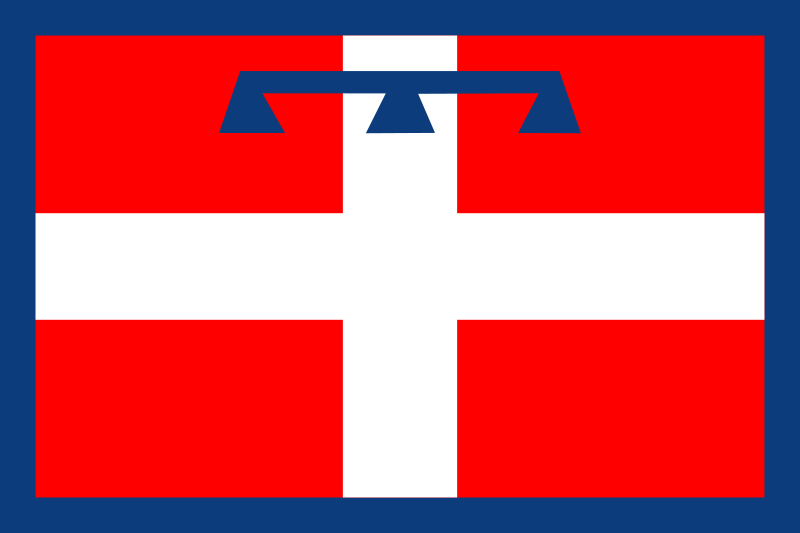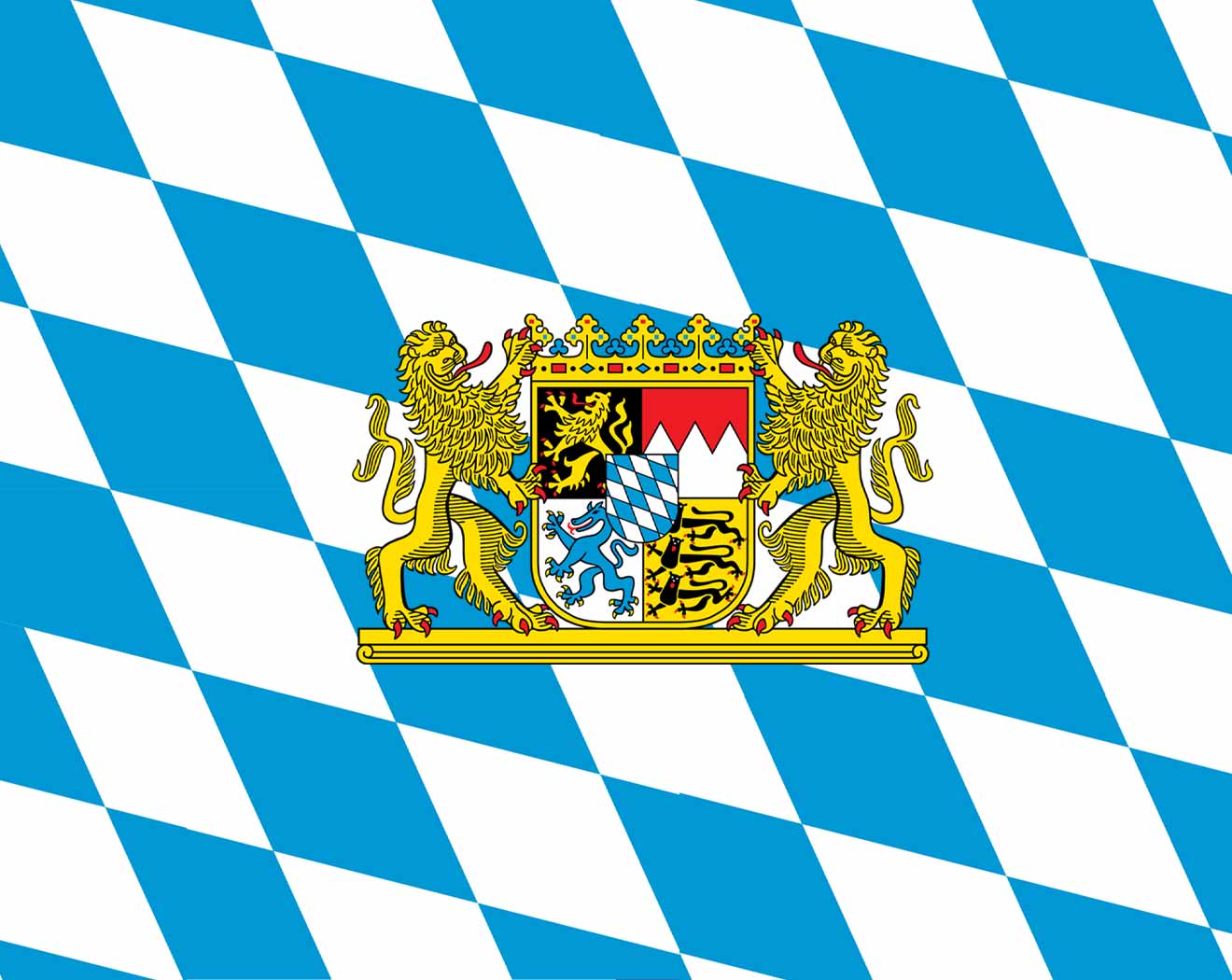
Deutsch-Chinesische Enzyklopädie, 德汉百科
 Ski vacation
Ski vacation


 FIFA Fussball-Weltmeisterschaft 2018
FIFA Fussball-Weltmeisterschaft 2018
 FIFA Fussball-Weltmeisterschaft 2018
FIFA Fussball-Weltmeisterschaft 2018
 Group B
Group B
 FIFA Fussball-Weltmeisterschaft 2018
FIFA Fussball-Weltmeisterschaft 2018
 Group G
Group G
 FIFA Fussball-Weltmeisterschaft 2018
FIFA Fussball-Weltmeisterschaft 2018
 Group F
Group F
 FIFA Fussball-Weltmeisterschaft 2018
FIFA Fussball-Weltmeisterschaft 2018
 Group C
Group C

 International cities
International cities
 Winter Olympics
Winter Olympics
 Russia
Russia
 Shanghai Cooperation Organization
Shanghai Cooperation Organization

索契(俄语:Сочи、亚美尼亚语:Սոչի, 格鲁吉亚语:სოჭი,拉丁字母转写:Sochi),另译素溪,俄罗斯联邦克拉斯诺达尔边疆区与阿布哈兹接界处、黑海沿岸,是俄罗斯受欢迎的渡假胜地。2013年有人口368,011人[9]。索契是苏联作家尼古拉·奥斯特洛夫斯基的疗养地点,他在这里写成了《钢铁是怎样炼成的》。这里有奥斯特洛夫斯基的故居博物馆。
2007年7月4日,国际奥林匹克委员会宣布索契获得2014年冬季奥林匹克运动会的主办权。也亦将举行2018年国际足联世界杯。
Sochi (Deutsch:Sotschi) ist das beliebteste Reiseziel der Russen. An die russische Riviera fährt jeder, der es sich leisten kann. Neben dem milden Klima sind es vor allem die unterschiedlichen Freizeitaktivitäten, vom Badeurlaub über das Skifahren bis hin zu Kuraufenthalten, die Sochi für die Urlauber so attraktiv machen.
Sochi ist das subtropische russische Urlaubsparadies, voll mit Palmen und den schwarzen Stränden des schwarzen Meer. In Sochi gibt es auch zahlreiche berühmte Kureinrichtungen und viele Kliniken, die heute natürlich auch exklusives Wellness anbieten. Sochi ist für Russland, was die Riviera für Westeuropa bedeutet. Der schwarzer Sand und Kieselstein-Strände erstrecken mehr als 30 Kilometer entlang der Küste vom Schwarzen Meer. Parallel dazu findet sich die Stadt Sochi. Sie ist damit die längste Stadt - nicht nur in Russland sondern auch auf dem ganzen Asiatischen Kontinent. (Quelle:http://www.sochi.de/)
Sotschi (russisch Сочи, , wiss. Transliteration Soči) ist eine Stadt und ein Stadtbezirk am Schwarzen Meer in Russland. Sotschi liegt in der südrussischen Region Krasnodar nahe der Grenze zu Georgien bzw. Abchasien und hat 343.334 Einwohner (Stand 14. Oktober 2010).[1]
Sotschi ist einer der beliebtesten Bade- und Kurorte Russlands: die Umgebung der Stadt wird häufig als „(Russische) Riviera des Schwarzen Meeres“ bezeichnet. Die Stadt ist darüber hinaus Sitz einer Universität.
ソチ、ソーチ(ロシア語: Со́чи [ˈsotɕɪ] (![]() 音声ファイル) Sochi、グルジア語: სოჭი Soch’i)は、ロシア連邦クラスノダール地方の都市で、ロシア随一の保養地。黒海に面し、アブハジアとの国境に近い。人口は39万5012人。
音声ファイル) Sochi、グルジア語: სოჭი Soch’i)は、ロシア連邦クラスノダール地方の都市で、ロシア随一の保養地。黒海に面し、アブハジアとの国境に近い。人口は39万5012人。
Sochi (Russian: Со́чи, IPA: [ˈsotɕɪ] (![]() listen)) is a city in Krasnodar Krai, Russia, located on the Black Sea coast near the border between Georgia/Abkhazia and Russia. The Greater Sochi area, which includes territories and localities subordinated to Sochi proper, has a total area of 3,526 square kilometers (1,361 sq mi)[5] and sprawls for 145 kilometers (90 mi)[11] along the shores of the Black Sea near the Caucasus Mountains.[citation needed] The area of the city proper is 176.77 square kilometers (68.25 sq mi).[5] According to the 2010 Census, the city had a permanent population of 343,334,[6] up from 328,809 recorded in the 2002 Census,[12] making it Russia's largest resort city. Being part of the Caucasian Riviera, it is one of the very few places in Russia with a subtropical climate, with warm to hot summers and mild winters.
listen)) is a city in Krasnodar Krai, Russia, located on the Black Sea coast near the border between Georgia/Abkhazia and Russia. The Greater Sochi area, which includes territories and localities subordinated to Sochi proper, has a total area of 3,526 square kilometers (1,361 sq mi)[5] and sprawls for 145 kilometers (90 mi)[11] along the shores of the Black Sea near the Caucasus Mountains.[citation needed] The area of the city proper is 176.77 square kilometers (68.25 sq mi).[5] According to the 2010 Census, the city had a permanent population of 343,334,[6] up from 328,809 recorded in the 2002 Census,[12] making it Russia's largest resort city. Being part of the Caucasian Riviera, it is one of the very few places in Russia with a subtropical climate, with warm to hot summers and mild winters.
With the alpine and Nordic events held at the nearby ski resort of Rosa Khutor in Krasnaya Polyana, Sochi hosted the XXII Olympic Winter Games and XI Paralympic Winter Games in 2014, as well as the Russian Formula 1 Grand Prix from 2014 until at least 2020.[13][14] It was also one of the host cities for the 2018 FIFA World Cup.
Sotchi (en russe : Сочи ; en géorgien : სოჭი ; en adyguéen : Шәача - Cheuatcha) est une ville et une station balnéaire du kraï de Krasnodar, en Russie. Elle est située au bord de la mer Noire, dans la partie russe du Caucase. La région a autrefois appartenu aux territoires de Géorgie (Colchide-Imérétie). La ville est fondée en 1838, avec l'implantation d'un fort russe. Sa population s'élevait à 368 011 habitants en 2013. Sotchi forme avec les villes avoisinantes une ville-arrondissement (ce que l'on appelle de manière non officielle le « Grand-Sotchi »), dont elle est le chef-lieu administratif. L'ensemble comptait 445 209 habitants en 20131. Sotchi a été la ville hôte des Jeux olympiques d'hiver de 2014, son parc olympique est aujourd'hui le théâtre du Grand Prix de Russie de Formule 1, et la ville fut l'un des sites de la Coupe du monde de football de 2018.
Soči (in russo: Сочи? ; traslitterazione anglosassone: Sochi, Шәэча in adighè) è una città della Russia meridionale, situata nel territorio di Krasnodar sulle rive del mar Nero. Fondata nel 1838, ricevette lo status di città nel 1896. Conta 424.000 abitanti.
La città è nota, in Russia ma anche all'estero, come importante centro di villeggiatura, dato soprattutto il suo contrasto climatico con il resto dell'immenso territorio russo. La città offre possibilità sia di turismo balneare che, durante l'inverno, di turismo sciistico. Ha acquisito ulteriore notorietà a livello mondiale per aver ospitato la XXII edizione dei Giochi olimpici invernali nel febbraio 2014 e per essere la sede del Gran Premio di Russia, valevole per il campionato del mondo di Formula 1, che si corre a Soči a partire dal 2014.
La città ha partecipato come una delle città ospitanti alla Coppa del mondo FIFA 2018 in Russia.
Sochi (![]() [ˈsot͡ɕɪ] (?·i) en ruso, Со́чи) es una ciudad de Rusia ubicada en el krai de Krasnodar, cerca del límite con Abjasia. Se sitúa entre las montañas nevadas del Cáucaso y el mar Negro, con una población de 411.524 habitantes en 2017.
[ˈsot͡ɕɪ] (?·i) en ruso, Со́чи) es una ciudad de Rusia ubicada en el krai de Krasnodar, cerca del límite con Abjasia. Se sitúa entre las montañas nevadas del Cáucaso y el mar Negro, con una población de 411.524 habitantes en 2017.
Es el centro administrativo de la unidad municipal de la ciudad-balneario de Sochi.
Со́чи — город в России, расположен на северо-восточном побережье Чёрного моря (Черноморское побережье России) в Краснодарском крае, на расстоянии 1620 км от Москвы.
Сочи — крупнейший курортный город России[9], важный транспортный узел[10][11][12][13], а также крупный экономический и культурный центр черноморского побережья России[14][15].
Неофициально именуется также летней, южной и курортной «столицей» России. В 2012 году журнал Forbes признал Сочи лучшим городом для ведения бизнеса в стране[16].
Сочи является самым длинным городом России[17][неавторитетный источник?][18][неавторитетный источник?], протяжённость которого составляет более 100 км.
В 2007 году Сочи избран столицей XXII зимних Олимпийских игр. 15 сентября 2009 года Сочи вступил во Всемирный союз олимпийских городов[19]. В период подготовки к Олимпиаде на развитие города и его инфраструктуры потратили 500 млрд рублей[20].
В 2018 году город принял матчи Чемпионата мира по футболу.



圣安东滑雪场位于蒂罗尔西部的阿尔贝格山,是奥地利著名的滑雪圣地,也是蒂罗尔州众多滑雪场中难度较高的世界知名滑雪场之一。据说经过圣安东滑雪场训练出来的滑雪者,世界上任何一家有难度的雪场都不会难倒他。


 FIFA Fussball-Weltmeisterschaft 1990
FIFA Fussball-Weltmeisterschaft 1990

 History
History

 International cities
International cities
 Turin
Turin

 International cities
International cities
 *World Design Capital
*World Design Capital
 Italy
Italy
 Winter Olympics
Winter Olympics
 2006 Winter Olympics
2006 Winter Olympics

 Piemonte
Piemonte
 Turin
Turin

 Ski vacation
Ski vacation

 Cities founded by the Romans
Cities founded by the Romans

 World Heritage
World Heritage

都灵(意大利语:Torino [toˈriːno] ![]() 聆听;皮埃蒙特语:Turin [tyˈɾiŋ];拉丁语:Augusta Taurinorum),中国大陆和港澳地区称为都灵,台湾称为杜林,是位于意大利北部的重要城市,皮埃蒙特大区和都灵广域市的首府。它坐落在波河的左岸,距离米兰大约140千米(87英里),阿尔卑斯山环绕在城市的西北。都灵中心区有面积130.17km²,人口911,534[2],是意大利人口第四多的城市;都灵城市区有面积1,126.6 km²,人口1,745,221[3];都灵都市圈有面积1,977 km²,人口2,200,000[4](占意大利总人口的3.4%[5])。
聆听;皮埃蒙特语:Turin [tyˈɾiŋ];拉丁语:Augusta Taurinorum),中国大陆和港澳地区称为都灵,台湾称为杜林,是位于意大利北部的重要城市,皮埃蒙特大区和都灵广域市的首府。它坐落在波河的左岸,距离米兰大约140千米(87英里),阿尔卑斯山环绕在城市的西北。都灵中心区有面积130.17km²,人口911,534[2],是意大利人口第四多的城市;都灵城市区有面积1,126.6 km²,人口1,745,221[3];都灵都市圈有面积1,977 km²,人口2,200,000[4](占意大利总人口的3.4%[5])。
都灵是一国际化的欧洲城市,[6][7] 都灵有时被称为“意大利自由的摇篮”、[8]、“阿尔卑斯之都”、“萨沃亚之都”。它拥有众多的文化设施和其他名胜。都灵因为它的巴洛克、洛可可和新古典主义法式建筑而举世闻名。它的很多广场、城堡、庭园和宫殿(如贵妇宫),都是由西西里建筑师菲利波·尤瓦拉建造的,他在设计时借鉴了法国经典建筑凡尔赛宫。[9] 这些法式建筑的典范包括:王宫、斯杜皮尼吉行宫和苏佩尔加大教堂。许多意大利高等教育机构位于此地,如都灵大学、都灵理工大学、都灵美术学院等。还有许多重要和著名的博物馆,如埃及博物馆[10] 和安托内利尖塔。
都灵曾经是欧洲重要的政治中心。1563年,它成为了萨伏依公国的首都,随后是萨伏依王室统治下的萨丁尼亚王国的首都,最后是意大利统一之后的第一个首都(1861年—1865年)。[11] 同时,它也是萨沃亚王室(意大利王室)的故乡。[12] 虽然因为第二次世界大战,它的大部分政治意义和重要性都丢失了,它还是在战后成为了欧洲重要的工业、商业和贸易的集散地。它现在是意大利的工业中心之一,和米兰、热那亚组成了“工业铁三角”。从经济上来说,都灵紧随罗马和米兰之后,是意大利第三大城市。[13] 它的GDP高达580亿美元,排名世界第78位。[14] 虽然不像罗马、米兰那样是“世界级城市”,GaWC评其为“适合发展”级别。[15]
都灵是意大利汽车制造业的摇篮,被称为“意大利汽车之都”或者“意大利的底特律”。是汽车品牌菲亚特、蓝旗亚和阿尔法·罗密欧的总部所在地。[16][17] 都灵还拥有足球俱乐部尤文图斯和都灵,举办过2006年冬季奥林匹克运动会。一些国际空间站设备,如和谐号节点舱和哥伦布实验舱,也是在都灵制造的。
トリノ(伊: Torino (![]() 音声ファイル))は、イタリア共和国ピエモンテ州にある都市で、その周辺地域を含む人口約87万人の基礎自治体(コムーネ)。ピエモンテ州の州都であり、トリノ県の県都。イタリア第4の人口規模を持つ。都市圏の人口は約170万人。一時は100万都市だったが昨今は人口減少が著しい。
音声ファイル))は、イタリア共和国ピエモンテ州にある都市で、その周辺地域を含む人口約87万人の基礎自治体(コムーネ)。ピエモンテ州の州都であり、トリノ県の県都。イタリア第4の人口規模を持つ。都市圏の人口は約170万人。一時は100万都市だったが昨今は人口減少が著しい。
ミラノに次ぐイタリア第2の工業都市であり、自動車工業の拠点である。近代にはサルデーニャ王国の首都が置かれた。サヴォイア王家の王宮群は世界遺産に登録されている。
Turin (/tjʊəˈrɪn, ˈtʊərɪn/;[2] Italian: Torino [toˈriːno] (![]() listen); Piemontese: Turin [tyˈriŋ])[3] is a city and an important business and cultural centre in northern Italy. It is the capital city of the Metropolitan City of Turin (an administrative division of Italy) and of the Piedmont region, and was the first capital city of Italy from 1861 to 1865. The city is located mainly on the western bank of the Po River, in front of Susa Valley, and is surrounded by the western Alpine arch and Superga Hill. The population of the city proper is 883,281 (30 November 2017)[4] while the population of the urban area is estimated by Eurostat to be 1.7 million inhabitants. The Turin metropolitan area is estimated by the OECD to have a population of 2.2 million.[5]
listen); Piemontese: Turin [tyˈriŋ])[3] is a city and an important business and cultural centre in northern Italy. It is the capital city of the Metropolitan City of Turin (an administrative division of Italy) and of the Piedmont region, and was the first capital city of Italy from 1861 to 1865. The city is located mainly on the western bank of the Po River, in front of Susa Valley, and is surrounded by the western Alpine arch and Superga Hill. The population of the city proper is 883,281 (30 November 2017)[4] while the population of the urban area is estimated by Eurostat to be 1.7 million inhabitants. The Turin metropolitan area is estimated by the OECD to have a population of 2.2 million.[5]
The city has a rich culture and history, being known for its numerous art galleries, restaurants, churches, palaces, opera houses, piazzas, parks, gardens, theatres, libraries, museums and other venues. Turin is well known for its Renaissance, Baroque, Rococo, Neo-classical, and Art Nouveau architecture. Many of Turin's public squares, castles, gardens and elegant palazzi such as the Palazzo Madama, were built between the 16th and 18th centuries. A part of the historical center of Turin was inscribed in the World Heritage List under the name Residences of the Royal House of Savoy.
The city used to be a major European political center. From 1563, it was the capital of the Duchy of Savoy, then of the Kingdom of Sardinia ruled by the Royal House of Savoy, and the first capital of the unified Italy (the Kingdom of Italy) from 1861 to 1865.[6][7] Turin is sometimes called "the cradle of Italian liberty" for having been the birthplace and home of notable individuals who contributed to the Risorgimento, such as Cavour.[8]
The city currently hosts some of Italy's best universities, colleges, academies, lycea and gymnasia, such as the University of Turin, founded in the 15th century, and the Turin Polytechnic. In addition, the city is home to museums such as the Museo Egizio[9] and the Mole Antonelliana. Turin's attractions make it one of the world's top 250 tourist destinations and the tenth most visited city in Italy in 2008.[10]
Even though much of its political significance and importance had been lost by World War II, Turin became a major European crossroad for industry, commerce and trade, and is part of the famous "industrial triangle" along with Milan and Genoa. Turin is ranked third in Italy, after Milan and Rome, for economic strength.[11] With a GDP of $58 billion, Turin is the world's 78th richest city by purchasing power.[12] As of 2010, the city has been ranked by GaWC as a Gamma World city.[13] Turin is also home to much of the Italian automotive industry.[14][15]
Turin is well known as the home of the Shroud of Turin, the football teams Juventus F.C. and Torino F.C., the headquarters of automobile manufacturers FIAT, Lancia and Alfa Romeo, and as host of the 2006 Winter Olympics.
Turin (Torino en italien, Turin en piémontais) est une ville italienne, chef-lieu de la ville métropolitaine de Turin et de la région du Piémont. Turin fut la capitale des États de Savoie de 1563 à 1713, du royaume de Sicile de 1713 à 1720, du royaume de Sardaigne de 1720 à 1861 et du royaume d'Italie de 1861 à 1865.
Torino (AFI: /toˈrino/[4], ; Turin in piemontese[5]) è un comune italiano di 879 808 abitanti[2], capoluogo dell'omonima città metropolitana e della regione Piemonte.
Cuore di un'area metropolitana che conta quasi 2 000 000 di abitanti su una superficie approssimativa di circa 2 300 km²,[6] la città di Torino è il quarto comune italiano per popolazione, il terzo complesso economico-produttivo del Paese e costituisce uno dei maggiori poli universitari, artistici, turistici, scientifici e culturali d'Italia. Nel suo territorio sono inoltre presenti aree ed edifici inclusi in due beni protetti dall'UNESCO: alcuni palazzi e zone facenti parte del circuito di residenze sabaude in Piemonte (patrimonio dell'umanità[7]) e l'area delle colline del Po (riserva della biosfera).
Città dalla storia bimillenaria, fu fondata probabilmente come Taurasia nei pressi della posizione attuale attorno al III secolo a.C. dai Taurini, popolazione ligure (o celto-ligure) dell'Italia settentrionale, e trasformata in colonia romana da Augusto col nome di Iulia Augusta Taurinorum nel I secolo a.C. Dopo il dominio ostrogoto fu capitale di un importante ducato longobardo, per poi passare, dopo essere divenuta capitale di marca carolingia, sotto la signoria nominale dei Savoia nell'XI secolo. Città dell'omonimo ducato, nel 1563 ne divenne capitale. Dal 1720 fu capitale del Regno di Sardegna (anche se solo de facto fino alla fusione perfetta del 1847, quando lo divenne anche formalmente),[8] stato che nel XIX secolo avrebbe portato all'unificazione italiana e che fece di Torino la prima capitale del Regno d'Italia (dal 1861 al 1865).
È stata la patria, natia o adottiva, di alcuni fra i più grandi scrittori e letterati italiani del XIX e XX secolo, tra i quali Edmondo De Amicis, Emilio Salgari, Italo Calvino, Natalia Ginzburg, Norberto Bobbio, Cesare Pavese e Primo Levi.
Sede nel 2006 dei XX Giochi olimpici invernali, città natale di alcuni fra i maggiori simboli del Made in Italy nel mondo, come il Martini, il cioccolato gianduja e il caffè espresso, è il fulcro dell'industria automobilistica italiana, nonché importante centro dell'editoria, del sistema bancario e assicurativo, delle tecnologie dell'informazione, del cinema, dell'enogastronomia, del settore aerospaziale, del disegno industriale e dello sport.
Turín (en italiano: Torino, en piamontés: Turin) es una ciudad, importante centro cultural y de negocios del norte de Italia, capital de la región de Piamonte, localizada principalmente en el margen izquierdo del río Po y rodeada por los Alpes. El área metropolitana de Turín, según la Organización para la Cooperación y el Desarrollo Económico, tiene una población de alrededor de 2.200.000 habitantes.2
La ciudad es rica en cultura e historia. Es conocida por sus numerosos museos de arte, sus restaurantes, sus iglesias, sus palacios, sus teatros de ópera, sus plazas, sus parques, sus jardines y sus bibliotecas, entre otros atractivos. Turín es ampliamente reconocida por su arquitectura barroca, rococo, neoclásica y Art Nouveau. Muchas de las plazas públicas de la ciudad, de los castillos, jardines y elegantes palacios (como el Palazzo Madama), fueron construidos por el arquitecto siciliano Filippo Juvarra, quien diseñó estos edificios en el estilo barroco y clásico del Palacio de Versalles, en Francia.3 Ejemplos de estos edificios de inspiración francesa incluyen el Palacio Real de Turín, el Pabellón de caza de Stupinigi y la Basílica de Superga.
Turín es frecuentemente llamada la «cuna de Italia» por ser el lugar de nacimiento de importantes políticos que contribuyeron con la unificación de Italia, como Cavour.4 La ciudad actualmente alberga algunas de las mejores universidades de Italia, como la Universidad de Turín, de seis siglos de antigüedad, y el Politécnico de Turín. También se encuentran en la ciudad museos prestigiosos e importantes, como el Museo Egipcio de Turín5 (el más antiguo en el mundo y considerado el segundo más importante en el mundo después de El Cairo por valor de los hallazgos) y la Mole Antonelliana. Los diversos monumentos y atracciones de Turín la convierten en una de los 250 principales destinos turísticos del mundo y en la décima ciudad más visitada de Italia para el año 2008.6
La ciudad solía ser un importante centro político europeo, siendo la primera capital de Italia en 1861 y la ciudad de residencia de la Casa de Saboya, la familia real de Italia.7 A pesar de que mucho de su significado e importancia política se había perdido cuando comenzó la Segunda Guerra Mundial, se convirtió en uno de los principales centros industriales y comerciales de Europa, y actualmente es una de las ciudades más industrializadas de Italia, formando junto con Milán y Génova el famoso "triángulo industrial". A pesar de tener muchos menos habitantes que Roma y Milán, Turín es la tercera ciudad más rica de Italia, después de estas.8 Con un Producto Interno Bruto de 58.000 millones de dólares, Turín es la ciudad número 78 en la lista de las más ricas del mundo por su poder adquisitivo.91011 Turín es también la sede de gran parte de la potente industria automovilística italiana.1213
La ciudad es también conocida por resguardar la «Sábana Santa», por ser la sede de los equipos de fútbol Juventus F.C. y Torino Football Club, el lugar donde se producen los coches FIAT, Lancia, Alfa Romeo, Maserati y la sede de los juegos olímpicos de invierno de 2006. Varios módulos de la Estación Espacial Internacional, como el Harmony y el Columbus, fueron fabricados en Turín.
Fue la capital del Ducado de Saboya desde 1563, luego del Reino de Cerdeña y finalmente la primera capital de Italia.14 Piero Fassino fue el alcalde de Turín, elegido en mayo de 2011 para un mandato de 5 años, representando a una coalición de centro-izquierda y fue a su vez el sucesor de Sergio Chiamparino. Desde junio de 2016, la alcaldesa es la economista Chiara Appendino, del partido Movimento 5 Estrellas.
Тури́н (итал. Torino [toˈriːno], пьем. Turin [tyˈɾiŋ]) — город в Италии, важный деловой и культурный центр северной Италии. Административный центр региона Пьемонт и одноимённой провинции Турин.
Расположен при впадении реки Дора-Рипария в реку По, на Паданской равнине у подножия Западных Альп, на подступах к Альпийским перевалам.
Четвёртый после Рима, Милана и Неаполя город Италии по количеству жителей, насчитывает около 880 тыс. чел. (2017), вместе с пригородами 1,7 миллион человек.
Город имеет богатую историю и культуру, и известен своими арт-галереями, дворцами, театрами, музеями, парками. Турин также знаменит своей архитектурой в стилях барокко, рококо, неоклассицизма и модерна.
Большая часть замков, дворцов (в частности Палаццо Мадама), садов и площадей были построены в XVI-XVIII вв. в процессе перевода столицы Савойского герцогства (позднее Сардинское королевство) из Шамбери (ныне Франция) в Турин.
Турин иногда называют «колыбелью итальянской свободы», за то, что он является родным городом заметных политиков и людей, внесших большой вклад в Рисорджименто, например Камилло Бенсо ди Кавур. В городе находятся множество университетов, колледжей, академий, лицеев и гимназий. Среди них основанный в XV веке Туринский университет. Самыми известными достопримечательностями Турина являются Египетский музей и символ города Моле Антонеллиана. Эти и многие другие достопримечательности делают город привлекательным для туристов со всего мира и позволяют Турину входить в десятку самых посещаемых городов Италии[3].
Город в XIX веке являлся важным политическим центром Европы. В 1861 году Турин стал первой столицей объединенной Италии и наряду с этим являлся столицей для Савойского дома, правящей династии Королевства Италии. Несмотря на то, что большая часть политической значимости Турина была растеряна после отмены монархии в Италии, город остается важным промышленным, экономическим и торговым центром Европы и Италии. Турин является третьим по экономическим показателям городом страны, после Милана и Рима. Также Турин является своего рода столицей автомобилестроения Италии. В городе располагаются штаб-квартиры компаний FIAT, Lancia, Iveco.
Город известен в мире благодаря христианской реликвии — Туринской плащанице, а также футбольным командам «Ювентус» и «Торино». Турин — столица зимних Олимпийских игр 2006 года.
Покровителем города считается Св. Иоанн Креститель (итал. San Giovanni Battista). Праздник города — 24 июня.



 Sport
Sport

 Tyrol
Tyrol
 Vacation and Travel
Vacation and Travel
 Bavaria
Bavaria
 California-CA
California-CA
 Geography
Geography
 Colorado-CO
Colorado-CO